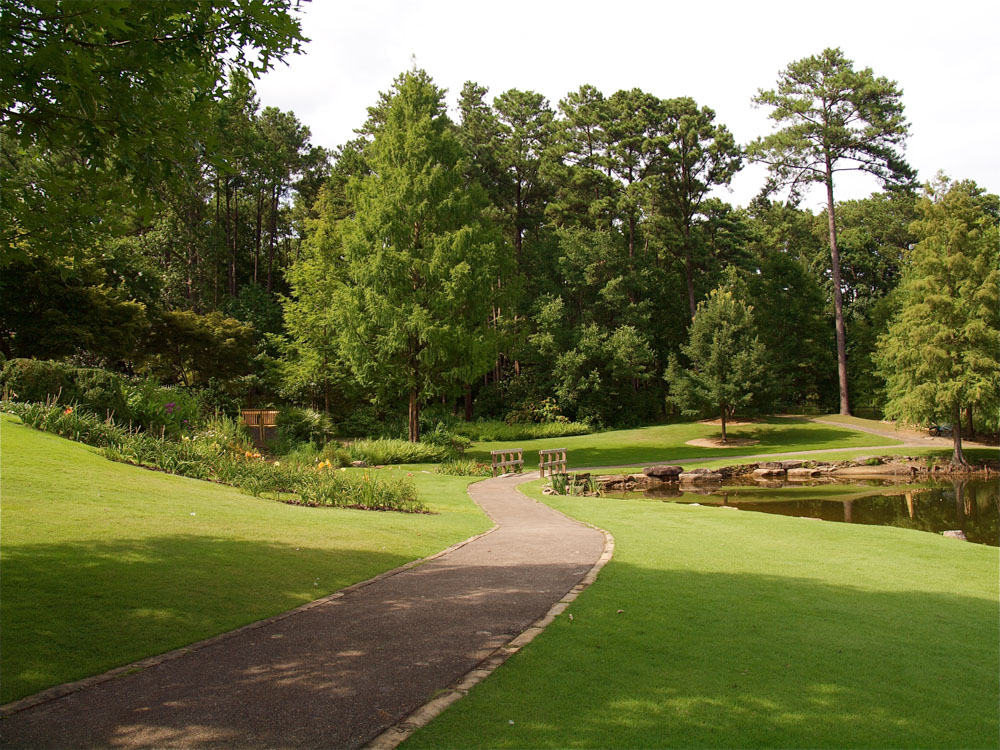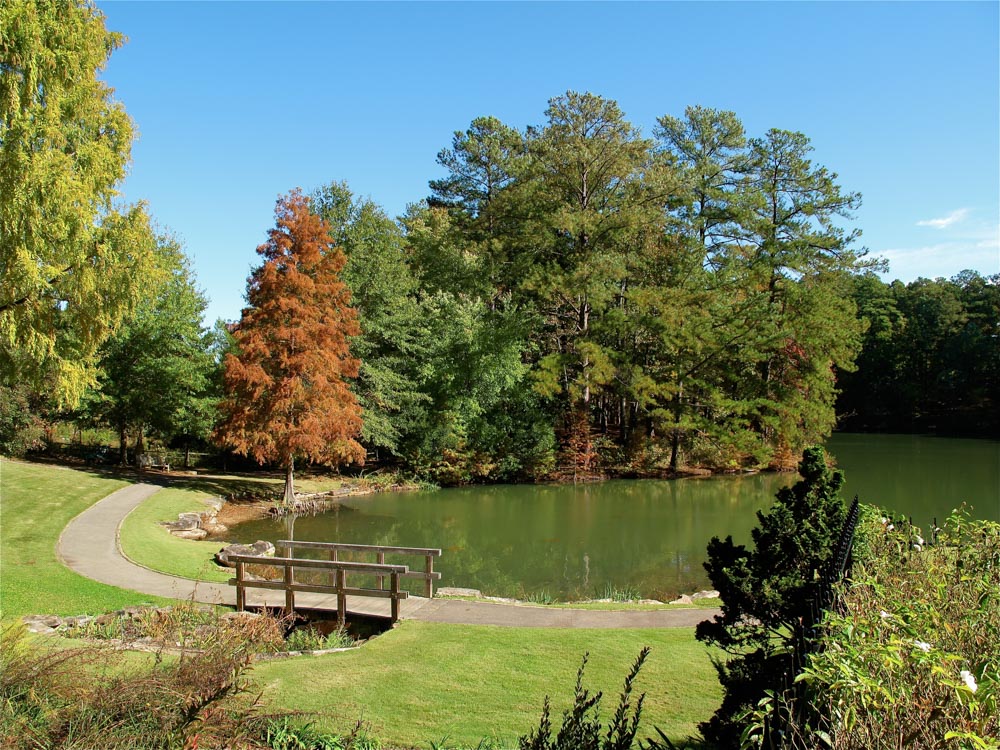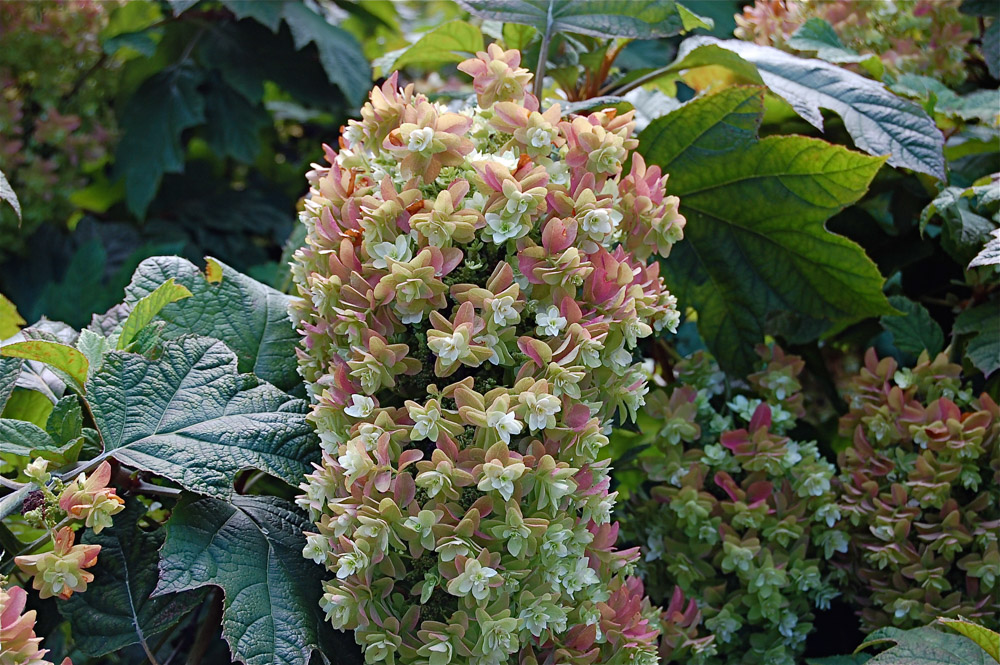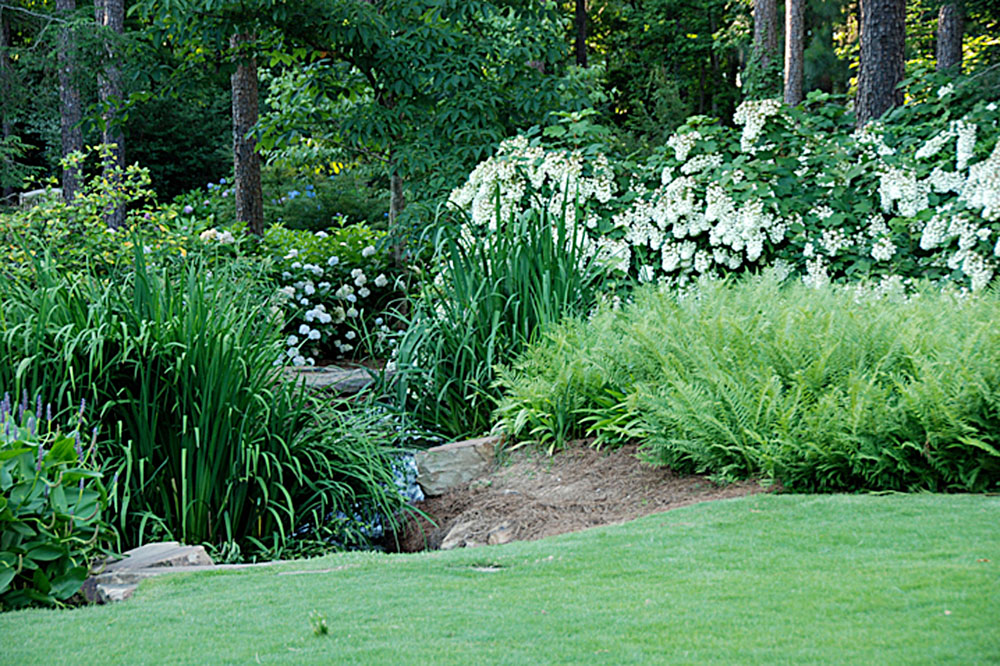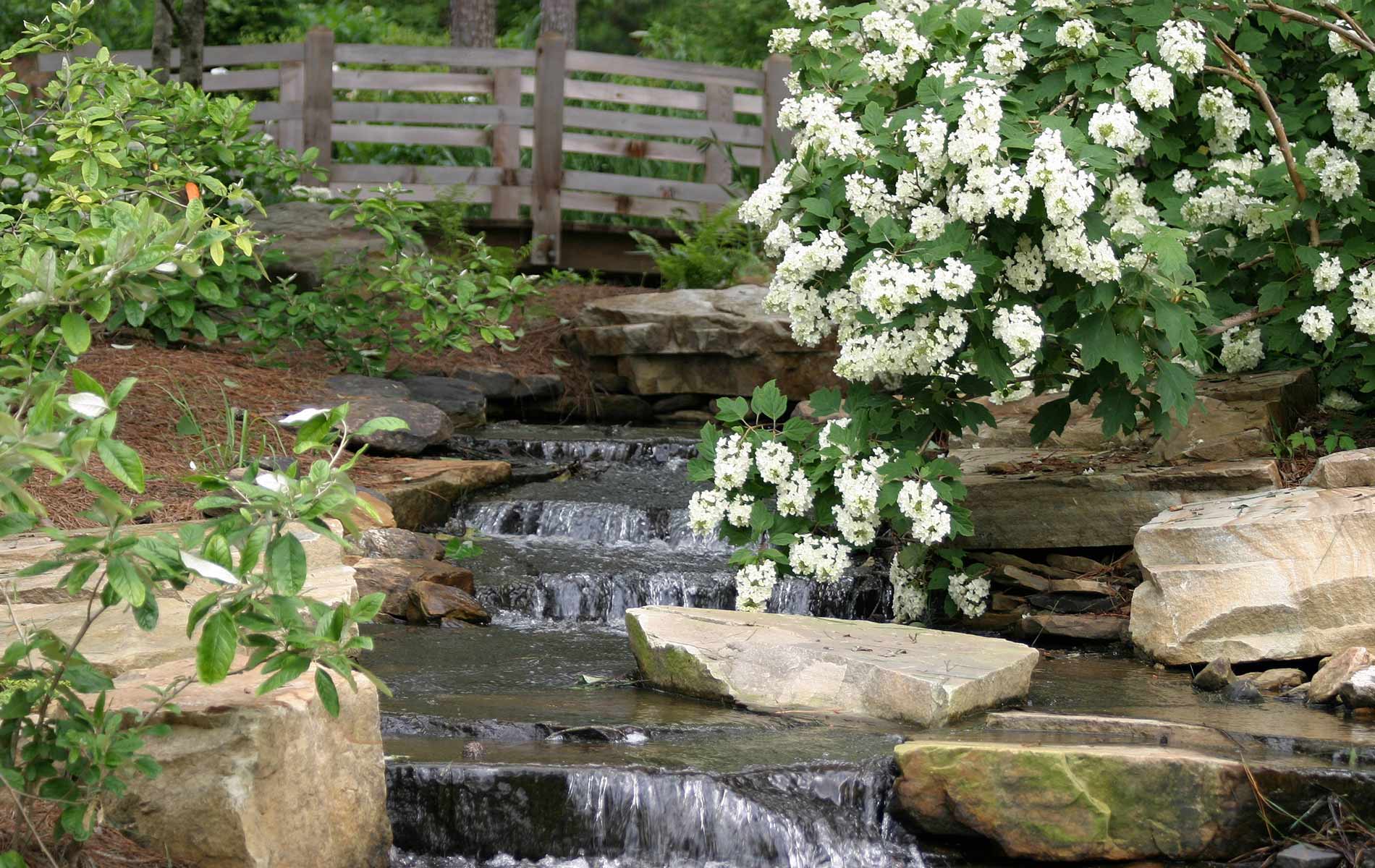
Summertime Snowflakes
By Christy Milliken
Photography courtesy of Aldridge Gardens
On a very humid Southern day, I sit in the Birmingham, Alabama, home of Eddie and Kay Aldridge. We are about to begin a journey into the history of a very special snowflake. This snowflake prefers warm weather, and its story dates back to 1969 in the little town of Lipscomb, Alabama. The snowflake begins with Eddie’s father, Loren L. Aldridge, a known horticulturist who started his business in 1927 after graduating from Auburn University.
Fast-forward to the summer of 1969.
Loren was sitting on the front steps of his home when he was approached by his neighbor, Charlie Bobo, who brought him a unique bloom for identification. It looked like a native oakleaf hydrangea, but Loren said the bloom was significantly different from that species. The plant had come from a woman’s yard in Lipscomb but was originally found at Turkey Creek Falls in Pinson (now a preserve) by the woman’s grandmother in 1923. After visiting the home and observing the plant, Loren was granted permission to take three cuttings, which he took back to his own home and rooted successfully.
In the fall of that same year, once the cuttings were well rooted, Eddie helped his father transport them to the rock garden at the Aldridge garden shop where they could be observed and tended to more closely. One day, upon returning to the nursery from a planting job, Eddie went to check on the hydrangeas—but they were gone! One of the employees who had been weeding that day removed the plants by mistake. Loren retrieved them from the dumpster, but two of the plants died within three days. The surviving hydrangea was repotted and sent to the Aldridges’ greenhouses in Bessemer, Alabama, to be propagated.

In the remainder of 1970 and 1971, Loren made eleven cuttings, and all of them rooted successfully. Eddie applied for a plant patent, and plant patent 3,047 is now known as the ‘Snowflake’ hydrangea. More than a thousand plants were propagated by Loren Aldridge before his passing in 1978. By 1981, more than a hundred of those plants were placed at Eddie and Kay’s home in Hoover, Alabama, known today as Aldridge Gardens.
After Loren’s passing, Eddie took over the greenhouse business where over nine thousand plants were propagated per year, although sales were slow because the plant was not yet known. The first Snowflake hydrangeas were sold to a client in Atlanta, and the plants grew in popularity in the Atlanta area until about 90 percent of sales were from clients there. The Atlanta Journal was the first publication to write about this unique plant and its patent. As time and demand progressed, the rooting of plants continued in two places—Eddie and Kay’s home and a ten-acre farm owned by the family, which is currently operated by Eddie’s cousin, Arthur Aldridge, and his wife, Martha. Arthur placed ads in American Nurseryman magazine, which reaches all over the United States, Canada, and Europe, and the popularity of the Snowflake hydrangea began to take root worldwide. The first truckload of plants that was sold after the ad was published went to Butchart Gardens near Victoria, British Columbia.
In the late 1980s, French plant propagator André Briant visited the Aldridge farm to purchase two hundred plants. In 1993, Briant featured the Snowflake hydrangea on the cover of his international catalog. He is responsible for the blooming popularity of the plants throughout Europe and the remainder of the world. France, Switzerland, Japan, and New Zealand are just a few places where they can be found abroad today.

Of course, the heart of the Snowflake hydrangea remains in America. Shortly after the sale to Butchart Gardens, Eddie received a phone call from Arthur stating that some “outfit” in the New York area wanted a shipment of the plants. After having had an issue with a past customer over a delayed payment, Arthur had become accustomed to requesting prepayment for orders, and he did so from this buyer as well. Eddie asked Arthur the name of the client in New York and he replied, “the Rockefeller Foundation.” Eddie laughs as he recalls this conversation and says, “It is probably the first time the foundation was ever asked to pay in cash.” Today, Snowflake hydrangeas are found around Long Island, in Central Park, and at the New York Botanical Garden.
The Aldridge family also gifted many of the plants to botanical gardens around the South, including those in Birmingham, Atlanta, and Nashville. There are even Snowflake hydrangeas planted at the White House. More recently, plants were gifted to Auburn University, where they are planted and bloom throughout the school’s campus and around the president’s mansion.
Eddie goes on to explain that as far as the patent is concerned, they never collected a royalty; however, he knew the patent was necessary for plant identification. It also helped publicity. The species of the Snowflake hydrangea differs from the native oakleaf variety in several ways. It blooms longer, with the sepals starting to emerge from the floret in May, beginning with four and developing over a longer period of time. The most interesting thing about the Snowflake is that, while in its six-week flowering phase, its seedpods develop into miniature flowers identical to the larger bloom.
Eddie and Kay Aldridge’s former home is now Aldridge Gardens, a thirty-acre public garden that includes a six-acre lake. Here, nestled in the heart of Hoover, Alabama, nature and art are in balance. The Aldridges have such a fondness for their former home that they created the floor plan of their current home in Birmingham to be identical to it. Meanwhile, they worked closely with the City of Hoover to ensure the gardens remain a sanctuary for all. Today, it offers education, events, and meeting venues, and it also includes an art gallery for exhibiting artists that is currently booked over a year in advance. Visitors can enjoy a stroll through the gardens and along the nature trail surrounding the lake, while bird-watchers can enjoy many species there. Aldridge Gardens is preserved with the intention of allowing the public to create, learn, and socialize in nature.
The Aldridges enjoy watching the seeds of discovery grow in the lives and spirits of those touched by this very special place. You will find the couple at the gardens several times a week casually chatting with visitors from all over the world. There is a twinkle in Eddie’s eye when he shares the story of the Snowflake hydrangea with them. It is a story rooted in time that has bloomed into a legacy.
— V —
You can read more about the gardens and the Snowflake hydrangea in Eddie’s book,
A Garden of Destiny, and at www.aldridgegardens.com.
Share This Story!
KEEP UP WITH THE LATEST STORIES FROM VIE



